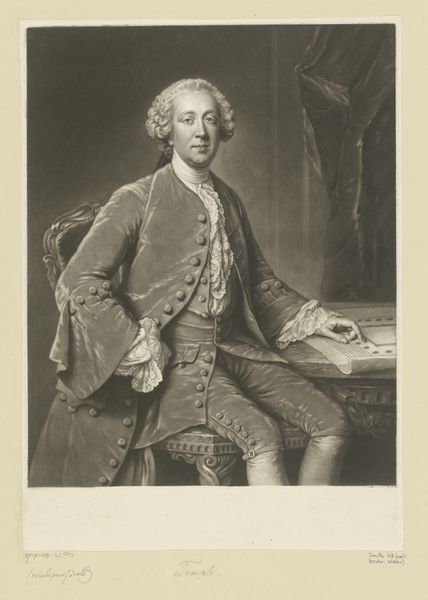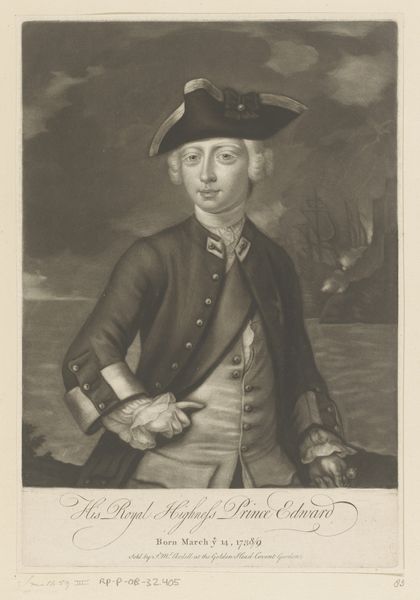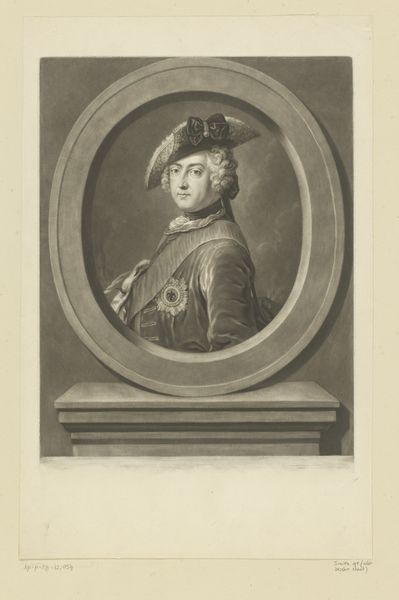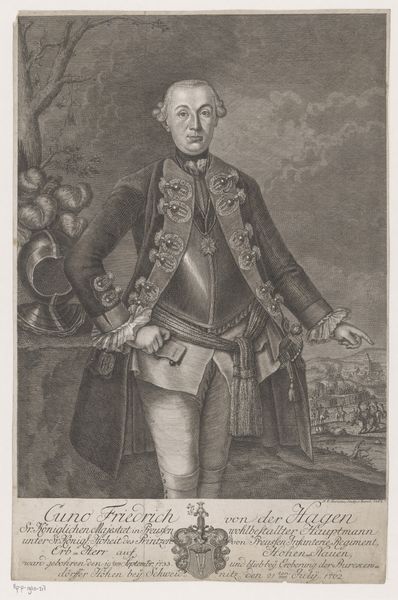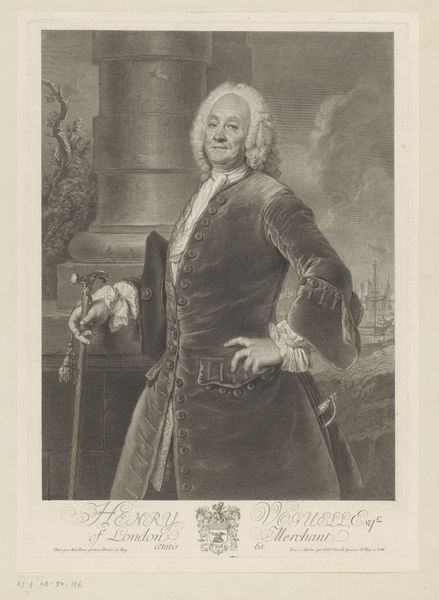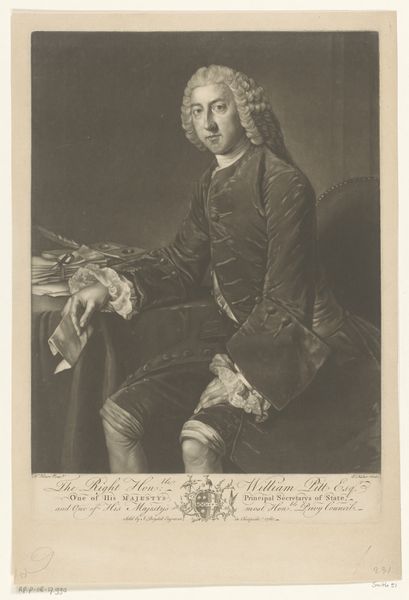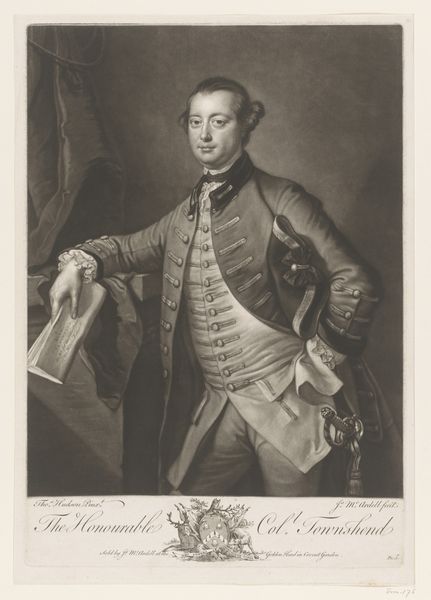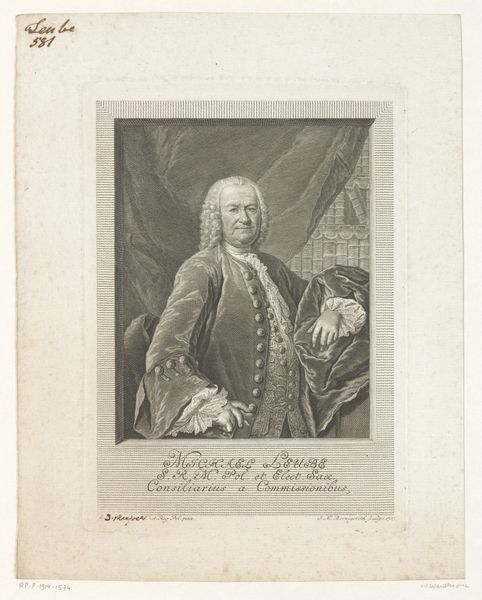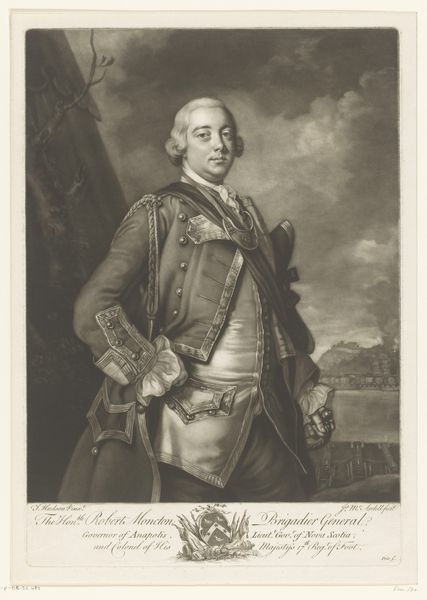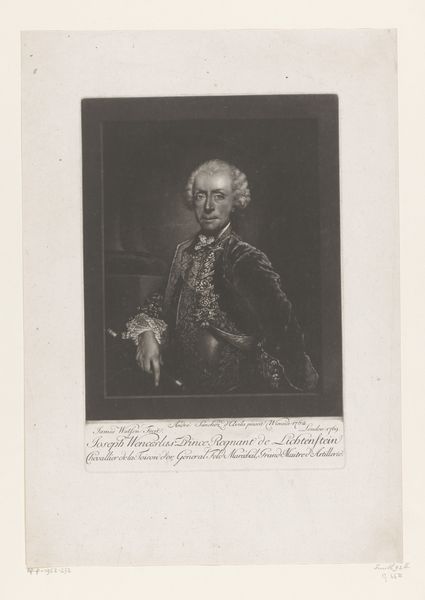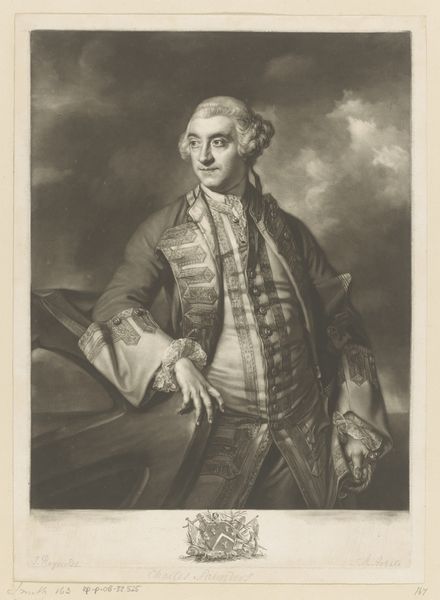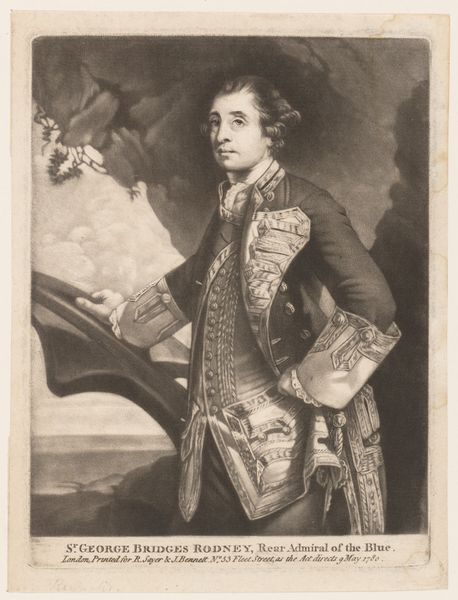
print, etching, engraving
#
portrait
#
baroque
# print
#
etching
#
old engraving style
#
pencil drawing
#
history-painting
#
engraving
Dimensions: height 331 mm, width 228 mm
Copyright: Rijks Museum: Open Domain
Editor: Here we have James McArdell's "Portret van Frederik de Grote," an engraving from around 1745-1765. It strikes me as very formal and…stiff, almost like a propaganda piece. What do you see in this work beyond the immediate impression of power? Curator: It's easy to see it as mere propaganda, but let's consider the context. This portrait emerges during the Enlightenment, a period of evolving ideas about leadership and representation. How might Frederick the Great, known for his military prowess and intellectual pursuits, be attempting to craft a specific image? What tensions do you see between the display of aristocratic power and the burgeoning ideals of the Enlightenment in his posture and gaze? Editor: I hadn't thought about the Enlightenment aspect so directly. I guess he’s trying to balance looking like a traditional monarch and an intellectual, which maybe explains the slightly awkward feel of the portrait? But wasn’t Frederick also known for his militarism? Doesn’t that contribute to the reading of him as a figure of power above all? Curator: Precisely. The baton in his hand is not just an accessory, but a potent symbol of his military command. We should question, though, what message McArdell, as the engraver, is reinforcing or perhaps even subtly undermining. Is he simply reproducing an image of power, or is there a critique embedded in the very act of representation? Consider the role of printmaking during this period in disseminating images and shaping public opinion. How does the medium itself contribute to the message? Editor: So it’s not just *what* is shown but *how* and *why* it’s being shown in this specific medium? The print makes it reproducible, which implies wide dissemination, shaping of public opinion… almost like early social media. It gives agency to McArdell as the engraver and as a result complicates this idea of simple, straightforward propaganda. Curator: Absolutely. By thinking intersectionally - considering the historical, social, and artistic contexts – we gain a far richer understanding of this portrait beyond its surface representation. Editor: I’m definitely seeing this portrait in a new, more nuanced light now. Thanks for sharing your insights.
Comments
No comments
Be the first to comment and join the conversation on the ultimate creative platform.
